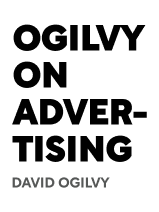

This article is an excerpt from the Shortform book guide to "Ogilvy On Advertising" by David Ogilvy. Shortform has the world's best summaries and analyses of books you should be reading.
Like this article? Sign up for a free trial here .
What is the goal of advertising? Is it simply to sell items and make a profit, or are there larger goals?
The primary goal of advertising is to increase profit. Whatever other goals you have can support that mission, but you should pursue these goals with the main goal of making money.
Read more about the goal of advertising and what it means.
The Goal of Advertising: Increasing Profit
While advertising has many benefits, such as reminding the public of your company name and helping you get distribution, the primary goal of advertising is to increase profit. Effective advertising can be very effective—one copywriter found that a good ad sold almost 20 times as much as a bad one. (In contrast, bad advertising can be so ineffective it actually harms sales—for example, when Ford advertised in every second issue of Reader’s Digest, the people who had seen the ads bought fewer vehicles than those who hadn’t.)
To increase profit, ads must promise the consumer a benefit, and ads that don’t do this, regardless of how attractive or creative they are, will fail.
- For example, one agency that won an advertising industry Clio award for creativity went out of business, and another winner lost the account whose advertisement won the award.
Even if products sell well on their own, good advertising can increase profit.
- For example, Listerine sold perfectly well for 40 years. But when it was advertised as a cure for bad breath, sales exploded.
The Craft of Advertising
The primary goal of advertising is to increase profit, which you can do either by attracting new customers or encouraging existing customers to buy your product more often. Effective advertising can be very effective—one copywriter found that a good ad sold almost 20 times as much as a bad one. Even if products sell well on their own, good advertising can increase profit.
- For example, Listerine sold perfectly well for 40 years. But when it was advertised as a cure for bad breath, sales exploded.
There are some steps to creating good ads regardless of the medium:
1. Learn about the product. It’ll be easier to make associations and come up with potential benefits when you have a solid knowledge base.
2. Study your competitor’s ads. When you come across effective ads, study and copy the techniques used. Particularly study direct-response ads (ads that encourage consumers to contact a company directly to make a purchase) because there’s a clear relationship between advertising and sales—the only factor that affected someone’s decision to buy a product was the ad, so the variables have been tested.
3. Engage in research. Once you know the goal of advertising, use research to find out what customers think of your company and how much money you need to put into advertising to increase sales. Additionally, use research to find out what product promise will most appeal to consumers who might be your target audience, what promotions or premiums people might be interested in, and what media will get you the most response.
Later, once you’ve released some ads into the world, continue to use research to inform your next campaign. Study whether your existing ads are confusing, how many people read or view them, and at what point people get tired of the message and a new campaign is necessary.
4. Choose a brand image. “Image” is the personality of a product, which stems from its inherent qualities as well as marketing variables such as price, packaging, and advertising style.
- For example, Jack Daniel’s whiskey projects an image of quality because it’s expensive.
5. Come up with big, timeless ideas. Big ideas will hook consumers and make your competitors jealous. Induce ideas by doing your research and then letting your mind unconsciously connect ideas as you go for a walk, drink, or take a bath.
6. Spotlight the product and make it the star. If there’s nothing different or unique about your product compared to your competitors’ (for example, you sell table salt), make the advertising itself unique, or be extra clear and convincing.7. Avoid working in committees. Committees tend to overcomplicate things and require compromise, and as a result, the final ad tends to say nothing of importance. Committees also slow down creation.
Remember, the goal of advertising is to increase profit. Everything you do should be in support of this goal.

———End of Preview———
Like what you just read? Read the rest of the world's best book summary and analysis of David Ogilvy's "Ogilvy On Advertising" at Shortform .
Here's what you'll find in our full Ogilvy On Advertising summary :
- What the "father of advertising" has learned from his decades' of experience
- How to craft easy-to-understand ads that work
- The 6 pioneers of the advertising industry






